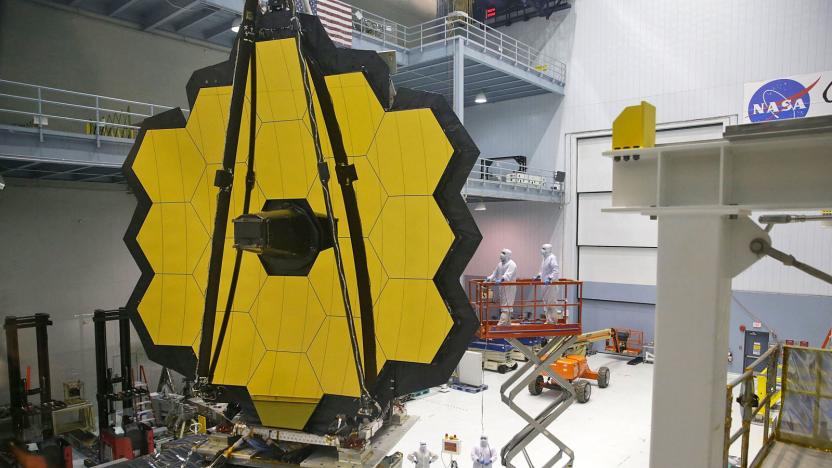ariane5
Latest

NASA has completed the $8.7 billion James Webb space telescope
The Hubble Space Telescope has given humanity unprecedented glimpses into the universe, but it will soon be replaced by a far more powerful model. NASA administrator Charles Bolden unveiled the completed $8.8 billion James Webb Space Telescope (JWST), which will be able to see the universe as it was 13 billion years ago. It's equipped with a 21-foot, gold-coated mirror array that can collect seven times more light than Hubble and scan the infrared spectrum to see through dust. "We've done two decades of innovation and hard work, and this is the result," project scientist John Mather says.

CE-Oh no he didn't!: SpaceX creator Elon Musk says Ariane 5 rocket has 'no chance'
Entrepreneur Elon Musk is well-known for talking trash about the vehicular competition... just not when it involves rockets instead of four wheels. Still, that's what we're facing in the wake of a BBC interview. He tells the broadcaster that the Ariane 5 rocket stands "no chance" in the face of the Falcon 9 and Falcon Heavy systems from his own SpaceX outfit, as it's more expensive to use -- and the contrast will only get worse when a cheaper, next-generation Falcon 9 arrives, he says. Musk echoes France's position that Ariane should skip a mid-life upgrade to its vehicle and jump directly to a less expensive Ariane 6. The executive has a point when there's more than 40 booked SpaceX flights so early into the Falcon program's history, although there's something left to prove when the first scheduled Dragon capsule launch ran into a non-critical engine failure. We'll know that Musk can walk the walk if there's still a long line of SpaceX customers by the time Ariane 6 hits the launchpad.

Hylas 1 satellite blasting off today, will rain down broadband from above
Europe's about to catapult a new satellite up into orbit today, this one with the stated goal of providing broadband internet access to people in the areas hardest to reach by terrestrial connectivity means. UK startup Avanti Communications is the official name responsible for the Hylas 1, which is a funny mix of private and public investment: it's a commercial venture, yet the British state has contributed £40 million ($63m) to its development and European Space Agency tech will be used to get that 2.6-ton antenna up beyond the planet's atmosphere. Ultimately, though, the goal's a good one -- up to 10Mbps connections will be on offer, with plans for further satellites already on the books, which should serve to expand internet accessibility in parts of Africa and Asia as well. The next Hylas tin can will be leaving terra firma in 15 months, provided there no unknown unknowns pop up during that time to get in its way.

EADS Astrium unveils European manned spaceship
It's been a great week for space geeks, what with the Phoenix Lander doing its Mars sniffing and toilet drama at the space station. Meanwhile, over in Europe, EADS Astrium Space Transportation is showing off a manned version of its Automated Transfer Vehicle (also known as the Jules Verne). This space vehicle has already been used to bring equipment to the International Space Station, but new designs reveal that Germany, France, and Italy are on board to retrofit the vehicle with seats and touch screens for humans. There's just one little problem -- the Jules Verne can't return non-humans (let alone humans) to Earth safely yet. Astrium is hoping to get the stage flying by 2013 on top of the Ariane 5 rocket in time for the end of the American Space Shuttle program in 2010, when it would replace it as the largest-payload space transport.


